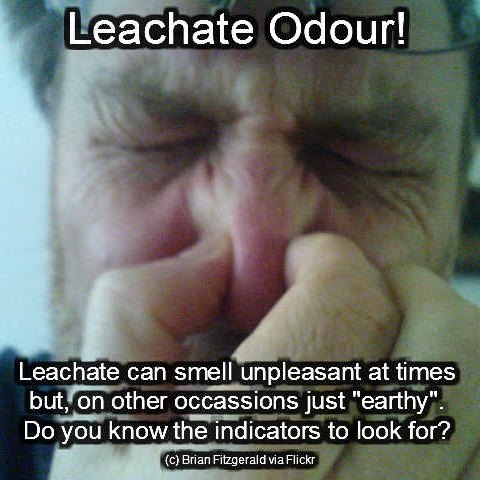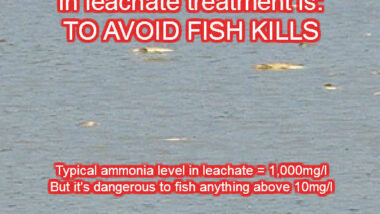 There are three very important leachate indicator parameters which are used as indicators to identify leachate contamination in any water sample analysed in a water quality laboratory. These three parameters can give an initial guide to anyone investigating what appears to be pollution occurring in the vicinity of a landfill, as to whether the source of the pollution may be the landfill, or not.
There are three very important leachate indicator parameters which are used as indicators to identify leachate contamination in any water sample analysed in a water quality laboratory. These three parameters can give an initial guide to anyone investigating what appears to be pollution occurring in the vicinity of a landfill, as to whether the source of the pollution may be the landfill, or not.
These indicator parameters may not provide a definitive answer, and in many cases a more detailed water quality analysis would be needed to confirm or refute the source as being leachate. However, analyzing for these is a good starting point.
These substances are found at low concentrations in the majority of soil water samples collected and are not in themselves indicators of the source of contamination being a landfill of leachate.
To be seen as indicative of the presence of landfill leachate it is the relative concentrations of these three substances which is important, which when the circumstances of the collection of samples, in relation to local landfill site geology and hydrogeology will be present in different indicative concentrations according to the source of the leachate.
Leachate from an Established Landfill Cell Containing Non-hazardous Waste (Methanogenic)
These are, for an established landfill site leachate from a methane producing, (methanogenic) waste:
1. A high ammoniacal nitrogen concentration in the range 500 mg/l to 3,000 mg/l
2. A comparatively low BOD when compared with the COD and frequently 10% or less than the COD
3. A relatively high salinity (NaCl concentration) when compared with domestic sewage and other organic industrial effluents from, for example, dairy activities and general food processing.
If samples are collected at a distance from the leachate source dilution may have occurred, and attenuation of the contaminants may also occur due to filtration and settlement effects, and also due to biological activity, however, an experienced leachate expert would be able to assess such changes, and the relative strengths given above may be the first indicator used in the expert’s analysis.
Although the above methanogenic leachate example is the most common encountered nowadays in developed nations where most landfills are containment landfills constructed to modern standards and lined and capped with low permeability membranes, leachate contamination may be suspected in water quality samples which have emanated from unlined and/ or capped landfill dumps. These may so old that it may be 30 or more years since their closure. Over this period leachate contamination in nearby groundwater and surface water may rise, and this may for example, be due to the disintegration of early containment engineerig measures.
In such cases the concentrations of the same indicator parameters as above may be much lower than given in the bullet points above.
Old and Dilute Leachate
In such circumstances it will very often be necessary for the water quality chemist familiar with leachate, or a leachate management expert, to also obtain additional water quality samples in the vicinity which are used to establish the natural “background” range of contamination in these substances.
All three of the above indicators may be present for example where stock have been living on agricultural land. They may be present from discharges from septic tanks, and all three (apart in most case from salinity), do naturally occur in many inland peat bog drains.
So, the decision about the likely presence, or otherwise of dilute leachate within watercourse and groundwater (well and boreholes) samples may need the involvement of an expert.
Fresh Acetogenic Leachate
However, the final type of leachate which we have not discussed so far is fresh leachate from a modern lined non-hazardous landfill or a recently infilled waste cell in an older landfill of that type, which has not yet started to produce methane (landfill gas). Usually, this is very obviously “leachate”, having a characteristically strong (acetogenic leachate) smell (many volatile fatty acids being present), and a water quality analysis may not be needed as this form of leachate is hard to mistake, and it follows that its presence is usually almost impossible for a polluting landfill operator to refute, eve before a test is carried out.
This type of leachate may be grey in colour with that sweet smell of garbage, or may even be jet black and producing a strong small of “bad eggs”. Either way, your nose will be the only indicator needed to recognize it!
We hope that this article was useful to our readers, however, if further assistance is needed to assess the source of any suspected leachate pollution, the author of this article will be pleased to receive requests for assistance via the Contact Page of this website.


